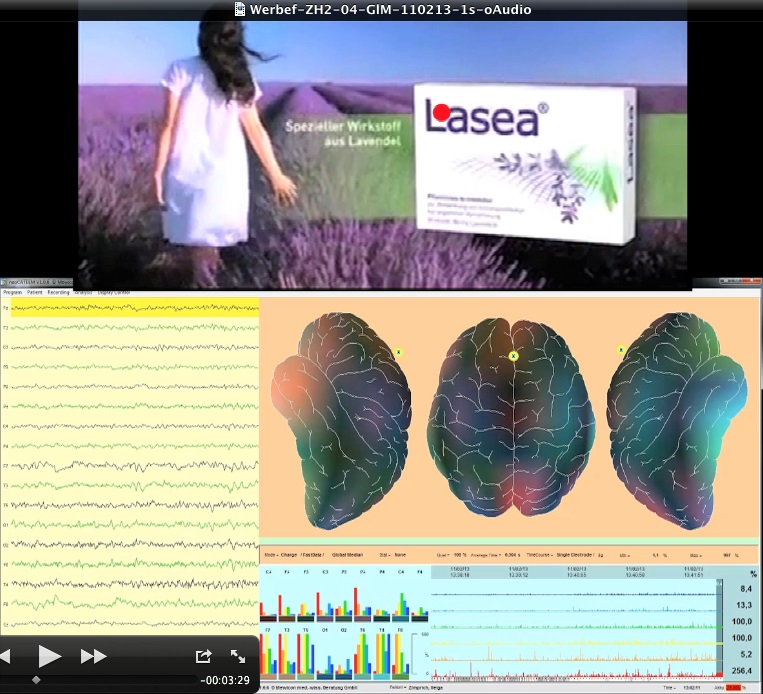NeuroCode Tracking
Fast Dynamic EEG in combination with Eye-Tracking
- Product No: NS-1062
- Manufacturer: NeuroCode
- EEG FFT
- Accessories
- Request Quote
Description
Analysing the electrical activity of the brain (the so-called language of the brain) can shed light to its underlying mechanisms. However, raw signal alone without analysis is not informative. Instead, quantitative frequency analysis using Fast Fourier Transformation (FFT) provides a useful tool to characterize the activity of the brain in detail. neoCateem, an EEG based neuroimaging software, translates the results of regional electrical activity into spectral colours and displays all frequency changes within one map, which corresponds mathematically to a 64 channel EEG. This processing results in enkephaloglyphs which represent spectral signatures of electrical brain activity under various recording conditions.
Through using neoCateem Software, enkephaloglyphs are related to cognitive and emotional states of the brain. They are subdivided into four categories depending on the application field: Electropsychogram (Advertisement Research), Electropathogram (Medical Diagnosis), Electropharmacogram (Drug Action) and Electrohypnogram (Sleep). Thanks to recent progress in software development, various states of the brain can be analysed within a time window of less than 0.4 seconds (about 3 pictures / second).
neoCateem Tracking Module
Neurocode Tracking Module enables fast and dynamic EEG recording in combination with eye tracing. Exact synchronization with eye tracking allows for quantitative evaluation of the reaction of the brain to single gazes. Importantly, not only conscious but also subconscious processes are evaluated.
neoCateem in Market Research
The biggest advantage of conventional EEG recording is the high time resolution with which data can be gathered from different brain areas. The method of brain mapping with Enkephaloglyph allows a precise EEG analysis during an eye-gaze on a TV commercial. The high time resolution quantitative EEG enables us to set up a library of enkephaloglyphs of brain electric activity related to individual mental reactions (memory!) as well as emotions.
neoCateem EEG-based Neuro-Imaging
The software package neoCateem has been available for two decades. CATEEM - developed with proprietary computer systems about 20 years ago has now been translated to run under the operating system Windows as neoCateem. Nearly 3 maps per second are delivered during mental activities. This opens the door for psychophysiological research in combination with other methods, such as eye tracking as well as for neurological diagnosis. Recording from 16 physical EEG channels corresponds to otherwise use of 64 electrode positions for mapping in conventional EEG settings. For more information please visit neoCateem Software.
neoCateem in Pharmacology
In Pharmacology, neoCateem monitors dose and time dependent changes of electric brain activity during clinical studies. For more information please visit neoCateem Software.
Software Features
- Pattern of all frequency changes is documented within one single map.
- Highest time resolution is sweep length of 364 ms to produce one map.
- Online moving average possible up to 3 minutes for neurological research applications.
- Automatic comparison of 102 EEG parameters to data-base containing hundreds of healthy brains.
- Data recorded and documented in a voltage mode or surface charge mode.
- Source Density, results correspond to MEG.
- Power within six specially defined frequency bands reflects changes of particular neurotransmitter action.
- Continous measurement of depth of sleep by a patented algorithm.
- Can display Topographical online real-time representation.
- Chronology of the frequency changes.
- Electrical power in uV2 or as global median presented as bargraph for each electrode.
Please note: Important! This product is for research applications only. Not a medical device as defined in EU directive 93/42/EEC. Not designed or intended to be used for diagnosis or treatment of disease.

